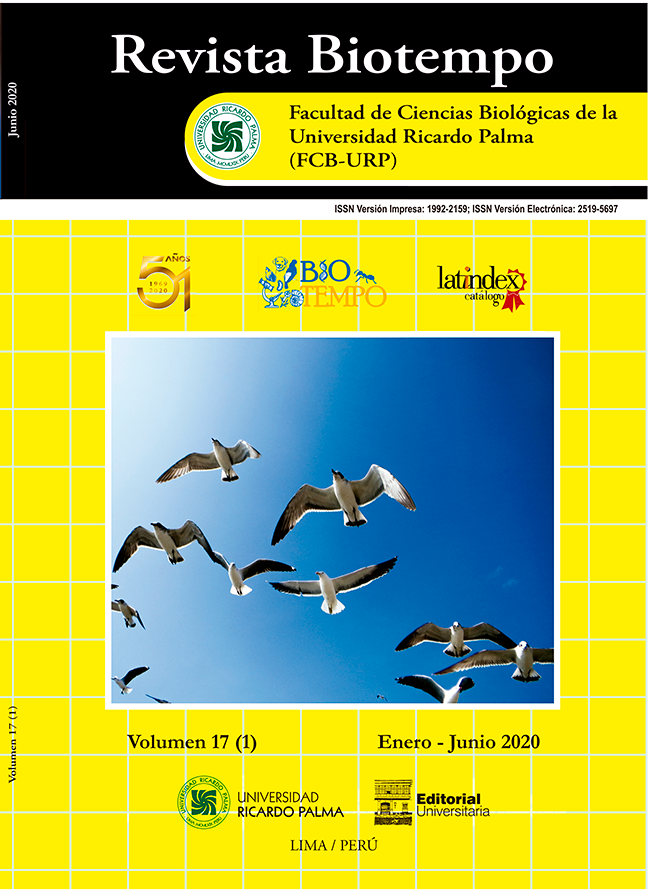PASSIVE MINERAL TREATMENT SYSTEM BEFORE THE ESTIMATED SUSTAINABLE ENVIRONMENTAL COST IN OXIDATION LAGOON ANGOSTURA LIMÓN, ICA, PERU
DOI:
https://doi.org/10.31381/biotempo.v17i1.2998Keywords:
environmental cost, ecotoxicological prediction, oxidation lagoon, physico-chemical parametersAbstract
Effl uent pollution in oxidation ponds continues to be an environmental problem for which the search for practical solutions is required. Th e aim of the present study was to evaluate a passive mineral treatment system at the estimated sustainable environmental cost in the Angostura Limón oxidation lagoon, Ica-Peru. Th rough random probabilistic sampling, the following were measured from July to December 2018 in effl uent (without treatment and with treatment): biochemical oxygen demand (BOD5), phosphate (PO4 3-), nitrite (NO2 -), nitrate (NO3 -), and ammonium (NH4 +). With the values of the physicochemical parameters, the relative sustainable environmental cost (COASOR) was estimated through a ratio between the evaluation cost (COA) and the cost of regulatory prevention (CONP). Th e removal percentage was calculated according to the environmental treatment system that was applied. Only the DO complied with the regulations where the COASOR estimate was 0.3 for the effl uent without treatment and with treatment indicating that the resource was relative non-sustainable. A removal percentage of 33.33% was obtained, so it was considered ineffi cient where the treatment order was: NH4 + > BOD5 > DO > PO4 3- = NO2 - = NO3 -. It was concluded that the wastewater that aff ects the limited use value and the passive environmental mineral treatment system was eff ective for the BOD5, although it did not comply with the recommendations.










